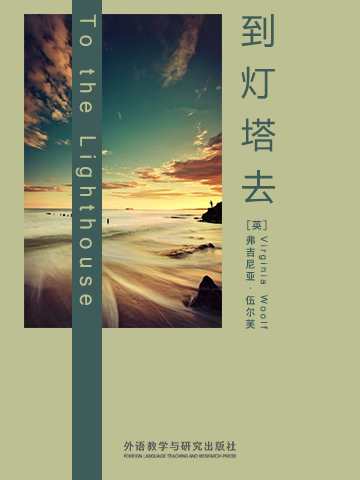伍尔芙最完美的一部作品,倾注其心血的准自传体意识流小说。
小说以到灯塔去为贯穿全书的中心线索,写了拉姆齐一家人和几位客人在第一次世界大战前后的片段生活经历。拉姆齐先生的幼子詹姆斯想去灯塔,但却由于天气不好而未能如愿。后大战爆发,拉姆齐一家历经沧桑。战后,拉姆齐先生携带一双儿女乘舟出海,终于到达灯塔。而坐在岸边画画的莉丽·布里斯科也正好在拉姆齐一家到达灯塔的时候,在瞬间的感悟中,向画幅中央落下一笔,终于画出了多年萦回心头的幻象,从而超越自己,成为一名真正的艺术家。
To the Lighthouse is a 1927 novel by Virginia Woolf. The novel centres on the Ramsays and their visits to theIsle of Skye in Scotland between 1910 and 1920.Following and extending the tradition of modernist novelists like Marcel Proust and James Joyce, the plot of To the Lighthouse is secondary to its philosophical introspection. Cited as a key example of the stream-of-consciousnessliterary technique, the novel includes little dialogue and almost no action; most of it is written as thoughts and observations. The novel recalls childhood emotions and highlights adult relationships. Among the book's many tropesand themes are those of loss, subjectivity, and the problem of perception.
伍尔芙提倡女权主义,强调现代小说要着力描写人的内心世界,而不要机械地描写现实的生活,这一点和维多利亚时代以来在英国文坛盛行的现实主义风格大大的背道而驰,他把高尔斯华绥,威尔斯等这一类当时的一流小说家称做,物质主义者,认为他们虽然写得很好,但是没有触及人物的内心世界,另一方面,她比较推崇哈代,康拉德等作家,认为他们的作品更加接近于人的内心世界,我们都知道,哈代的作品是自然主义和宿命论的混合。她最推崇的作家当然是詹姆斯,乔伊斯,伍尔芙把乔伊斯的创作称为"精神主义",事实上,伍尔夫的创作,就是在乔伊斯的影响下完成的。
- THE WINDOW
- TIME PASSES
- THE LIGHTHOUSE





















 京公网安备 11010802032529号
京公网安备 11010802032529号
笔记加载中...